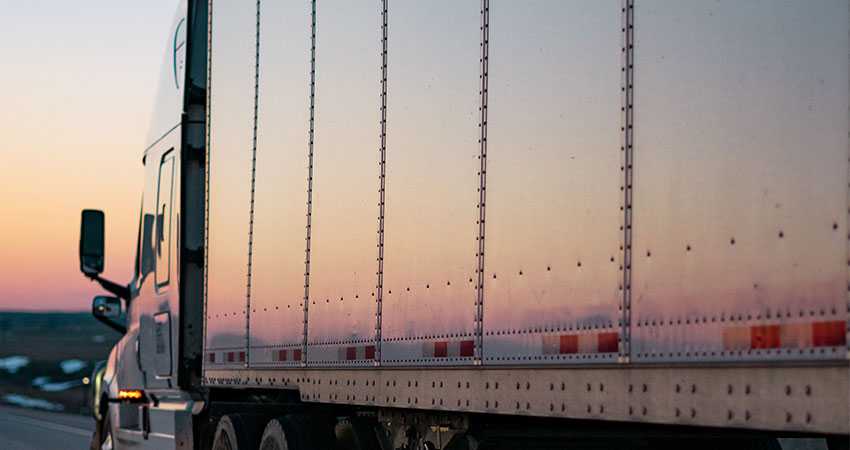Today’s businesses operate in a world where customers can be virtually anywhere. The explosion of ecommerce has set new standards for shipping direct to consumer (DTC). Customers now expect faster delivery, with manufacturers, retailers and suppliers moving products to vastly different locations around the globe, leading to increased shipping costs.
These increases, coupled with an increased demand, have forced businesses to consider other options for getting shipments where they need to go at the right price and in the desired time. Many ecommerce shippers are turning to less-than-truckload (LTL) shipping as a creative and flexible solution that provides an efficient avenue to get their products to customers on time, at a fraction of the cost.
Due to the complexity of freight shipping operations, many businesses that move large quantities of goods may have preconceived notions about LTL or believe common myths about why LTL isn’t right for them. By and large, these myths may be exactly the opposite of the how a well-organized and prepared 3PL handles LTL shipments.
LTL: An Overview
When deciding how to move a product from point of origin to its destination, it can be difficult to know which method is best. LTL is a great choice for nearly all shippers and provides plenty of options for businesses both large and small. LTL can be a great option if:
- There is a need for improved transit times (largely based on service level selected)
- The product is smaller than a standard truckload since most LTL is less than 15 pallets
- There are strict budget requirements for product shipment
- Products need to be shipped from origin direct to consumer
You can and should take advantage of LTL shipping options when your orders check these boxes. It is useful for anyone operating a made-to-order model or distributing a small number of pallets per order. LTL gives you the flexibility to ship different size orders across the U.S. and beyond with minimal lead time.
Common LTL Myths
Supply chain and logistics strategy can be a complicated web, with regulatory compliance, financing restrictions and customs/border guidelines. This leads to common misconceptions about LTL shipping that cause some businesses to shy away from an invaluable freight option.
Myth: Air is faster than LTL
Busted: This is the most common misconception about expedited shipments. Many businesses assume that a shipment loaded onto a plane will arrive at its destination quicker than by road. In reality, this is only true when shipping coast to coast. LTL shipping options can often deliver next day with guaranteed delivery times, similar to next-day air transit, and typically at a fraction of the cost. In addition, pandemic conditions have increased reliance on regional distribution centers for order fulfillment, making LTL a fantastic option for nearly any shipping speed.
Myth: LTL reduces product traceability
Busted: It’s easy to assume that something shipped LTL would be harder to trace than something sent as a single unit. However, modern advances in barcoding and package tracing technology have made this a non-factor.
LTL shipments have more traceability than ever before for customers to track their order in transit. This is all possible through cutting-edge TMS software and years of experience with these types of shipments. Businesses can rest easy knowing they will always be able to track their freight no matter what method they use, all thanks to competent 3PL support.
Myth: Temperature controlled shipments can’t be sent LTL
Busted: Produce and perishable goods manufacturers have additional hurdles, including the need for temperature-controlled vehicles. Of course, they need to be shipped quickly to keep their freshness intact. Many businesses assume that these requirements make them ineligible for LTL shipping, given the mix of different products all sent in one container. This isn’t true since LTL can be as flexible as you need it to be.
Myth: Service providers aren’t willing to ship LTL or specialized freight
Busted: The world of specialized freight is a vast one, with LTL just representing one of many specialized services. It can be confusing to choose what works best for your needs, leading some shippers to believe that service providers are unwilling to take advantage of these options due to the added complexities and associated fees.
This is another myth. An accomplished 3PL is deeply engrained in the world of specialized freight, leveraging relationships with a robust network of service providers to provide maximum effectiveness. Extreme length, a freight offering for those shipping larger or awkwardly sized items across large distances, is an example of specialized freight. 3PLs understand the fee structure and limitations for extreme length shipments. More importantly, they know when to recommend it to their customers to make sure they’re realizing the best savings.
Choosing the Right Partner
3PLs should consistently collaborate with customers and have strategic conversations regarding their specific goals for goods and services. Your 3PL should know if LTL would be a valuable option for your business. Hopefully this checklist will provide your team with more knowledge of the benefits it can bring.
Andrew Welling is Director of Cross-Border Services at TA Services

